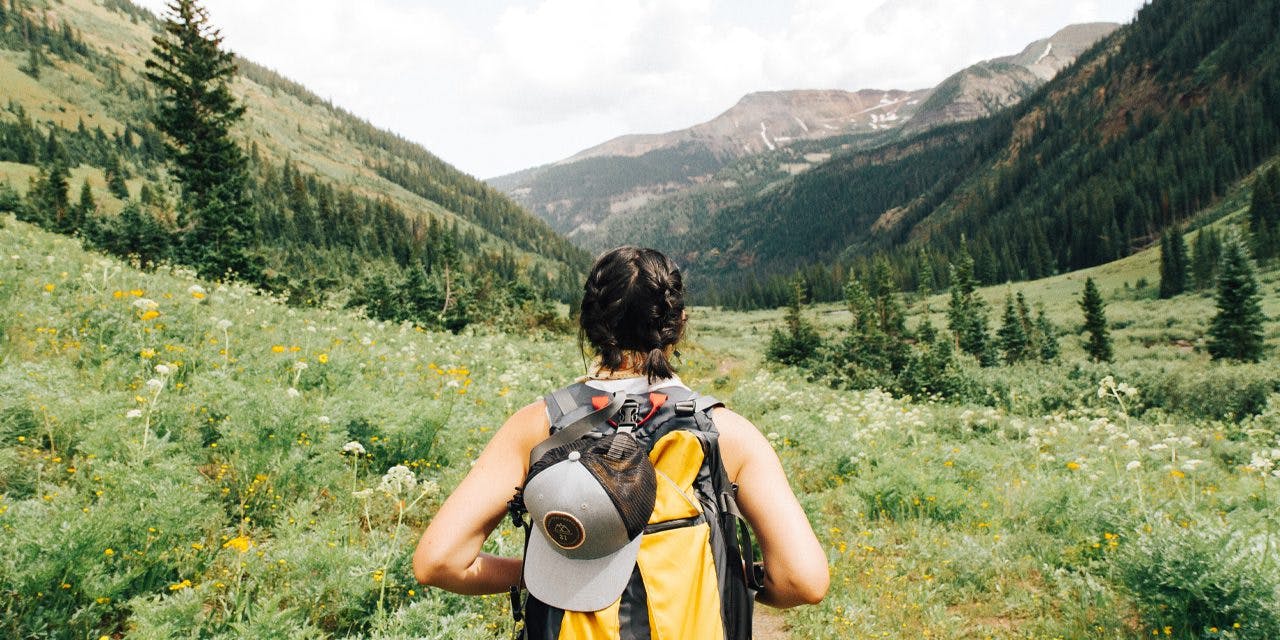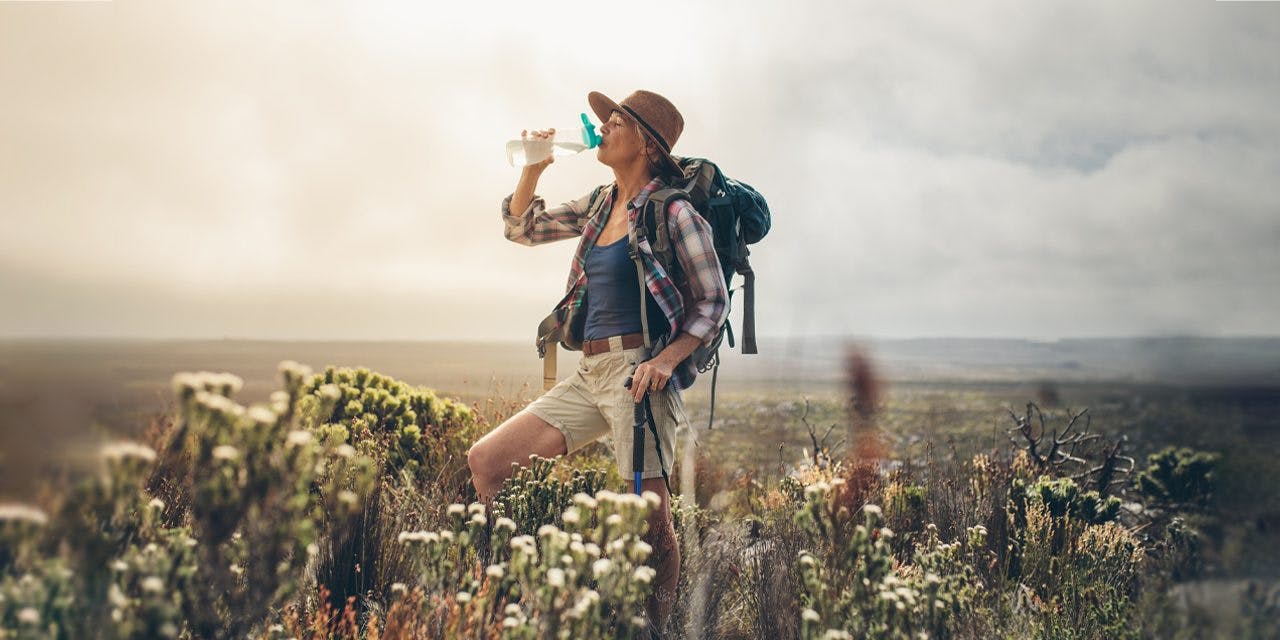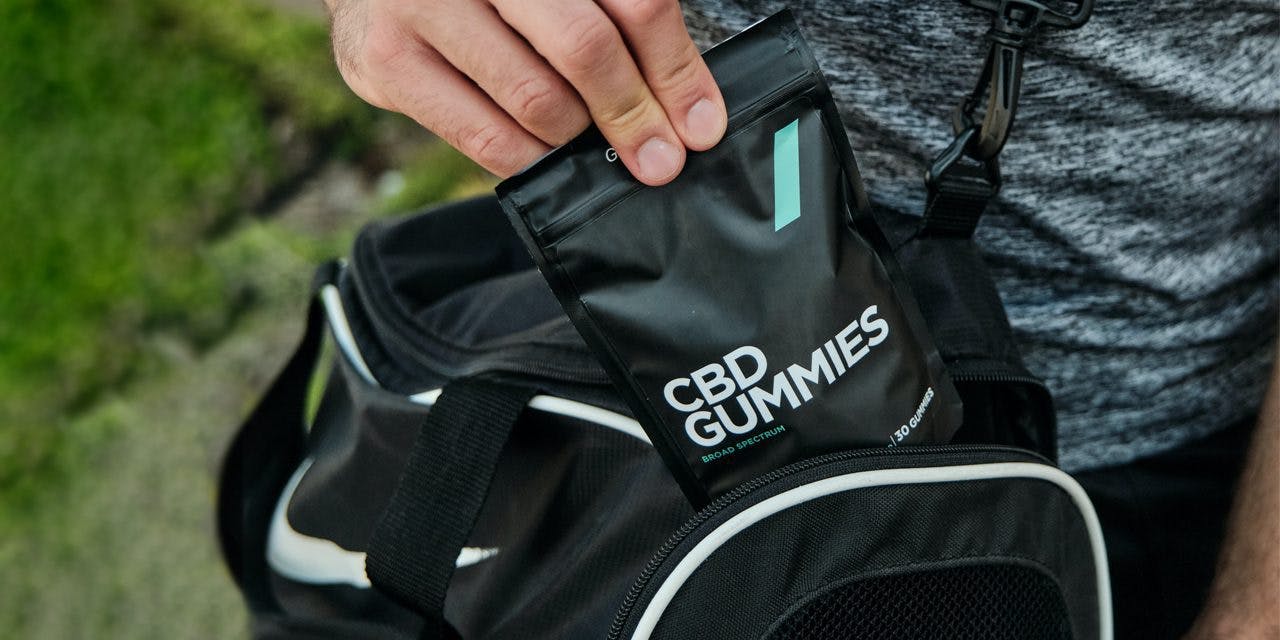Hiking With Cannabis: Tips, Etiquette, Safety Concerns

Article written by

Shanti RyleContent Writer
Content reviewed by

Dr. Lewis JasseyMedical Director - Pediatric Medicine
Hiking is an excellent outdoor option for those who want to exercise while enjoying the bounties of nature. With thousands of gorgeous trails nationwide, people in legalized states have understandably wanted to pair the psychoactivity of cannabis with hikes to enhance their overall experience.
However, if you bring marijuana on your hike, it’s important to keep laws, proper manners, and etiquette in mind. A hiking trail isn’t your backyard; treating your fellow trailblazers and the environment respectfully is essential.
Get your medical marijuana card
Connect with a licensed physician online in minutes.
Can You Bring Weed on a Hike?
The majority of U.S. states have legalized either recreational or medical cannabis, but that doesn’t automatically mean cannabis use is allowed on the trail. Per the National Park Service, cannabis’ status as a federally illegal substance means it’s against the law to possess or consume marijuana in any national park. Even in legalized states, most regulations still prohibit the public use of cannabis — this includes in state parks.
We cannot recommend the public use of cannabis, but it’s important to maintain discretion if you choose to do so. If you want to complement your hiking experience with cannabis use, err on the side of caution and smoke or vape your weed in your car or another private (and legal) space before hitting the trail. You can be fined or convicted with jail time by state or national law, and it’s simply more respectful to other hikers and nature to keep the act of consumption to yourself.
Download Our Guide To Your Cannabis Rights
Safety and Etiquette Tips for Using Cannabis on the Trails
When it comes to hiking with cannabis, there are a few safety and etiquette tips cannabis-using hikers should follow:
- Be cautious of an open flame. This rule is true of all fire-related activities, from cigarette smoking to campfires, especially in dry areas and seasons. Absent-mindedly tossing the remains of a joint or accidentally dropping your lighter could lead to devastating consequences, starting a forest fire that would destroy the local ecosystem and the natural beauty many others enjoy. If you do smoke, be careful with your fire. Or, opt for a non-flame consumption method like edibles to stay on the safe side.
- Bring extra water. It’s generally good practice to pack more water than you think you’ll drink on a hiking trip, but this rule doubly applies to cannabis users. Smoking weed can often lead to dehydration and accompanying dry mouth, so it’s important to stay extra hydrated and have surplus water in an emergency. It doesn’t hurt to bring a water filtration device if you think you’ll run out. Trail mix (combined dried fruit, nuts, and granola) can also increase saliva production and help provide energy for longer hikes.
- Choose the right trail. It’s essential to choose a trail well-suited to your experience level and cannabis use. Some trails are easy and obvious, while others are more challenging and hard to pick out, even for sober hikers. Make sure you know your trail’s path before you consume your cannabis products, or bring along a map or GPS to guide you along the way.
- Respect other hikers. On hiking trails, you’ll likely encounter other people similarly enjoying the fresh air and beautiful views. Everyone wants a good experience on their hike, and not everyone outdoors is a fan of cannabis. Think of using cannabis on the trail as the equivalent of someone smoking cigarettes. Refrain from smoking weed around others whom the smoke or smell may bother, particularly families with children.
- Avoid going alone. When possible, hike with other people. Even if you’re all consuming cannabis together, there’s safety in numbers, particularly in an emergency. With more people in on the hiking experience, the less likely you’ll all get lost or take unnecessary risks, and, in the most extreme cases, the more quickly you can be found by rescue services.
- Leave no trace. Nature’s golden rule says to leave no trace of your presence, which is just as true for cannabis users. After a long hike, ensure you’ve left no edible wrappers or extinguished roaches (even unlit ones can be a fire hazard) on your path. No one wants to see cannabis litter on the trail, and picking up trail trash is a good idea to preserve the natural beauty of the federal or state land.
Best Strains for Hiking and Backpacking
Several strains make for excellent hiking companions, depending on your desired experience. When comparing cultivars, those seeking a more energetic boost or psychedelic delights may opt for a variety higher in THC, THCV, CBG, limonene, beta-caryophyllene, pinene, and terpinolene. Those who want to prevent muscle soreness or get anxious when out in the wilderness may have a better time with cultivars higher in CBD, myrcene, linalool, and humulene. Indicas or high-CBD options may also be a good choice for those on multi-day hiking trails, as they can help individuals fall asleep and soothe inflammation and soreness after a long day of trekking.
Some good choices for cannabis cultivars include:
- Blue Dream
- Afghani
- Cinderella 99
- Harlequin
- Green Crack
- Sour Diesel
- Pineapple Express
Get Your Medical Card
Connect with a licensed physician online in minutes.
Frequently Asked Questions
Can you smoke on a hike in Colorado?
In Colorado, it is illegal to consume cannabis publicly, even though it’s recreationally legal. Because state and national parks are considered public, you technically cannot smoke during your hike in Colorado. Instead, opt to consume beforehand in a safe, private place.
Can you exercise on sativa?
Many people who appreciate the benefits of exercising with cannabis opt for a sativa strain before they begin training. This is primarily due to sativa’s perceived energizing properties and ability to focus the mind on the task at hand.
However, there aren’t many differences between sativas and indicas regarding their possible effects. Different plants have different chemical compositions, so it is better to consider the cannabinoid and terpene profiles to get an idea of a plant’s effects rather than whether or not it is labeled “sativa.”
We would also generally recommend people refrain from cannabis use before exercise, particularly intense exercise. This is because of the strain both exercise and THC can cause on the heart.
Is indica or sativa better for hiking?
Sativas are considered to produce more energetic and euphoric effects and are often the cultivars of choice for those journeying on outdoor activities. Indicas are thought to be better suited for post-hike wind-downs, thanks to many strains’ ability to heal muscle soreness and fight inflammation.
However, we would be careful of saying one way or the other, as there are few actual differences between indica and sativa cannabis varieties when it comes to their chemical composition and effects. Therefore, choose what dose and administration route work best for you based on what time of day you’ll be consuming cannabis.



